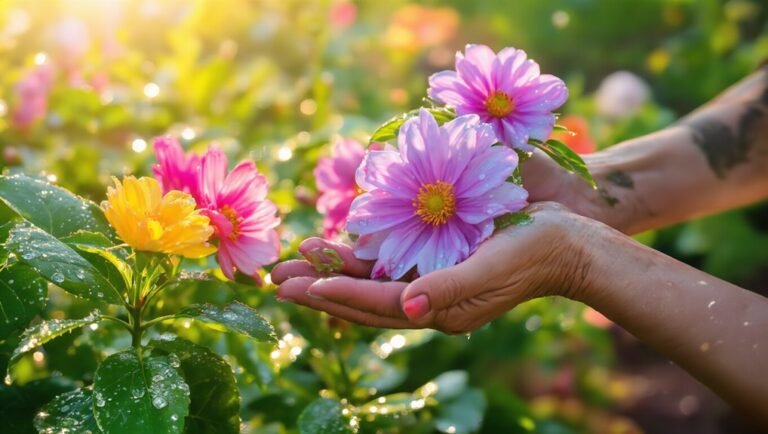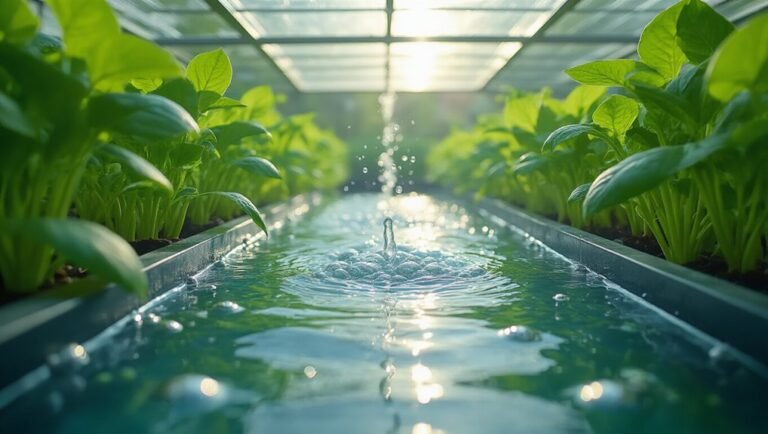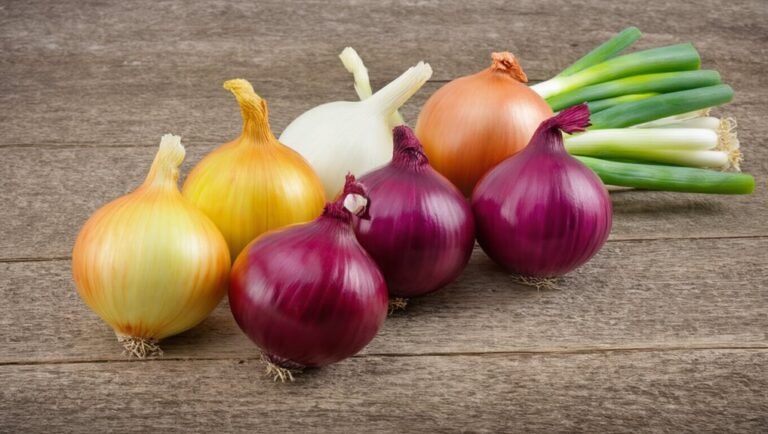To start a home garden in 2025, begin by understanding your space and climate. Assess sunlight, soil type, and local conditions. Choose plants that thrive in your zone and match your gardening preferences. Equip yourself with basic tools like gloves and a trowel, then prepare your soil with compost. Establish effective watering strategies and stay vigilant against pests. With these basics in place, you’ll be well on your way to enjoying a thriving garden. Discover more tips ahead!
Key Takeaways
- Assess your available sunlight, soil type, and local climate to choose suitable plants for your home garden.
- Opt for plants that align with your preferences, ensuring they thrive in your climate zone and soil conditions.
- Gather essential gardening tools, including gloves, trowels, and watering equipment, to facilitate efficient planting and maintenance.
- Establish a consistent watering schedule and utilize organic matter to enhance soil fertility and moisture retention.
- Plan seasonal tasks like planting, harvesting, and maintenance to keep your garden thriving throughout the year.
Understanding Your Space and Climate
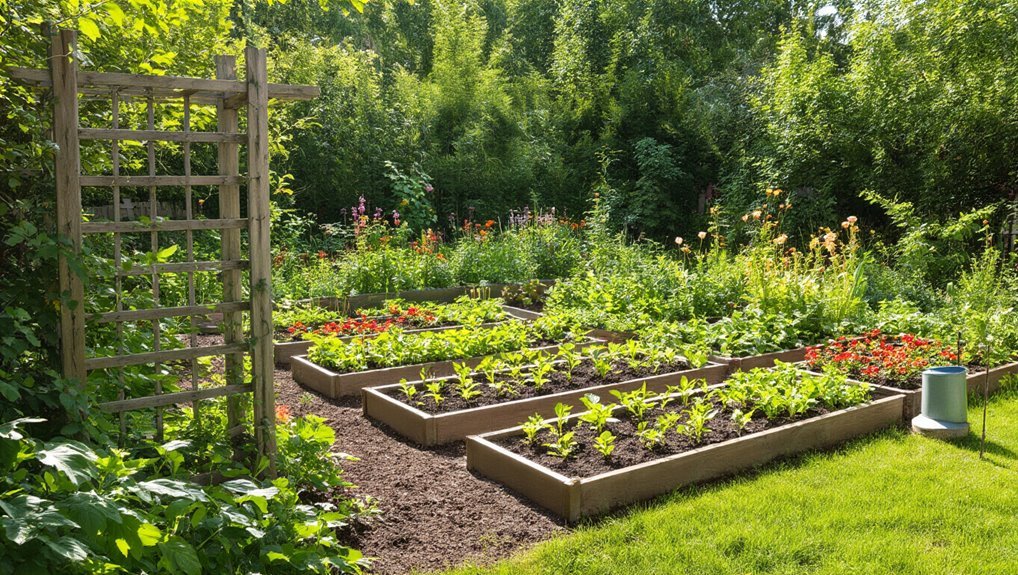
Before you dig into your garden, it’s crucial to assess your space and climate, as they play a significant role in what you can successfully grow.
Start by evaluating your available area. Consider sunlight exposure; most plants thrive in at least six hours of direct sunlight daily. Check for shade from trees or buildings, which can influence your plant choices. Additionally, having the right premium slow cookers can inspire some delicious meals using fresh produce from your garden.
Next, analyze your soil type. Is it sandy, clayey, or loamy? Each type affects drainage and nutrient retention.
Don’t forget to monitor the local climate; understand your hardiness zone to determine which plants can survive your winters. Additionally, knowing the local climate conditions can help you choose the right plants for your garden.
Lastly, consider potential pests and wildlife that may affect your garden. Gathering this information helps you create a thriving garden tailored to your environment.
Choosing the Right Plants for Your Garden
With a solid understanding of your space and climate, you can now focus on selecting the right plants for your garden.
Start by considering your preferences—do you want flowers, vegetables, or herbs? Look for plants that thrive in your specific climate zone and soil type. Native plants often require less maintenance and are more resilient. Additionally, incorporating high-end kitchen stand mixers into your kitchen can enhance the way you prepare meals with your homegrown produce.
Think about the amount of sunlight your garden gets; some plants need full sun, while others thrive in partial shade. Additionally, consider the growing season—choose plants that can flourish during your local growing periods. Investing in high end kitchen stand mixers can also enhance your cooking experience with fresh produce.
Lastly, don’t forget about companion planting; certain plants can benefit each other. By making informed choices, you’ll create a thriving garden that suits your lifestyle and environment.
Essential Tools and Supplies for Beginners
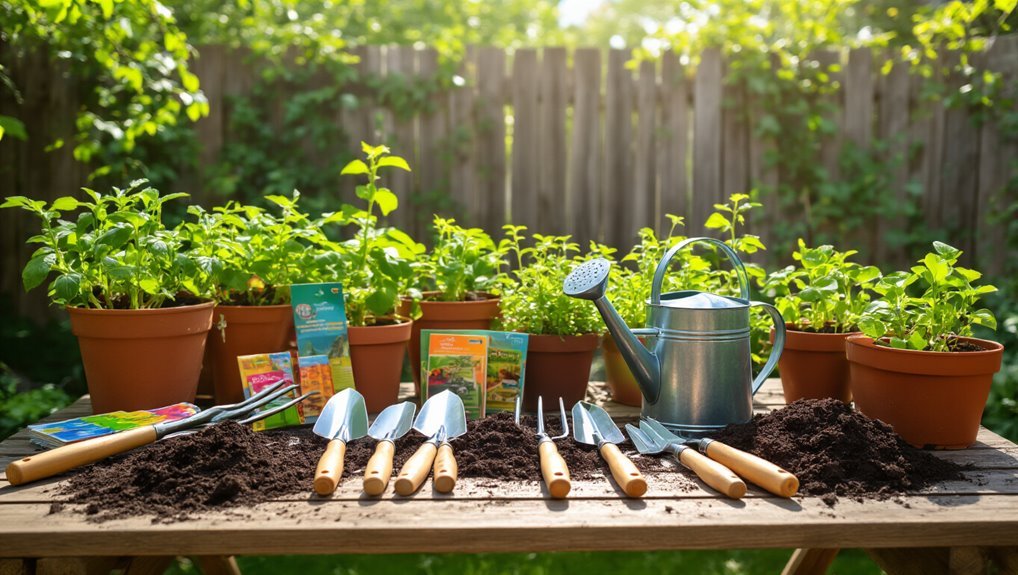
A few essential tools and supplies can make your gardening experience smoother and more enjoyable.
Start with a sturdy pair of gloves to protect your hands while working. A hand trowel is invaluable for digging, planting, and transplanting. Don’t forget a garden fork for turning soil and aerating it.
A watering can or hose with a spray nozzle ensures your plants get the hydration they need. To keep things organized, invest in a gardening apron or tote bag for your tools.
Finally, a good pair of pruning shears is essential for maintaining plant health. Consider incorporating a premium slow cooker into your meal prep routine to enjoy delicious, home-cooked meals after a long day in the garden.
With these basics, you’ll be well-equipped to create your thriving home garden and enjoy every moment spent outdoors.
Happy gardening!
Soil Preparation and Fertilization Techniques
Although it may seem daunting, preparing your soil and understanding fertilization techniques are key steps to a successful home garden.
Start by testing your soil’s pH and nutrient levels; this helps you determine what amendments it needs. Loosen the soil by tilling or turning it, ensuring good aeration for roots.
Incorporate organic matter like compost or well-rotted manure to boost fertility and improve texture.
For fertilization, choose a balanced fertilizer or one tailored to your plants’ needs. Apply granules or liquid feeds according to package instructions, avoiding over-fertilization which can harm plants.
Remember to mix fertilizers evenly into the soil. With proper preparation, you’ll create a thriving environment for your plants to flourish.
Happy gardening!
Watering and Irrigation Strategies
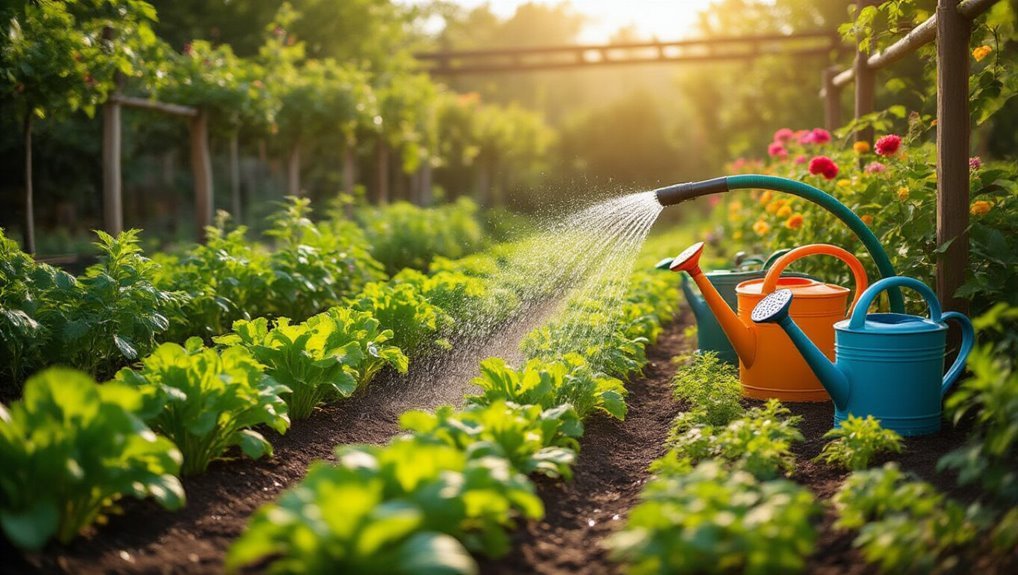
Effective watering is essential for your garden’s health, as plants rely on water for growth and nutrient uptake. To keep your plants thriving, establish a consistent watering schedule.
Early morning is the best time to water, reducing evaporation and allowing plants to absorb moisture throughout the day. Use drip irrigation or soaker hoses for efficient watering, delivering moisture directly to the roots.
Monitor your plants regularly; signs of wilting or yellowing indicate they need water. Aim for deep watering, ensuring the soil reaches at least six inches down.
Mulching can help retain moisture and reduce evaporation, making your watering efforts more effective. Remember, it’s better to underwater than overwater, as soggy roots can lead to problems.
Stay attentive, and your garden will flourish.
Pest Control and Disease Management
Keeping your garden healthy requires vigilance against pests and diseases that can threaten your plants. Start by regularly inspecting your plants for any signs of trouble, like discolored leaves or unusual spots.
If you spot pests, consider using natural remedies, like neem oil or insecticidal soap, to control the infestation. Encourage beneficial insects, such as ladybugs, to help manage pests naturally.
For disease management, practice crop rotation and avoid overcrowding plants to improve air circulation. Ensure your plants get adequate sunlight and water to stay strong.
If you notice a disease, remove affected leaves promptly to prevent it from spreading. By staying proactive, you can create a thriving garden free from unwanted pests and diseases.
Sustainable Gardening Practices
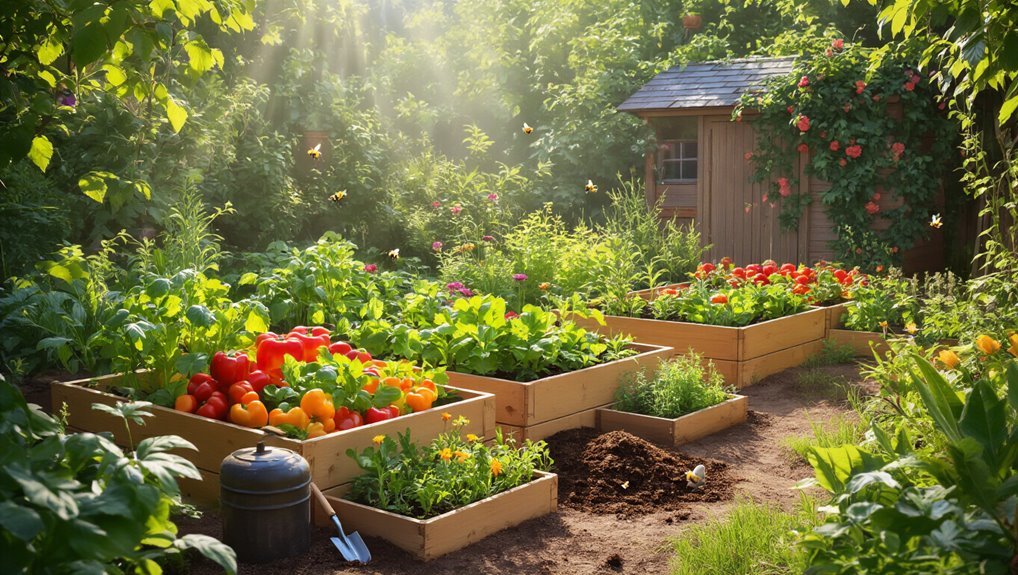
Maintaining a healthy garden goes hand in hand with adopting sustainable gardening practices.
Start by using organic fertilizers and compost to enrich your soil naturally. Crop rotation helps prevent nutrient depletion and reduces pest issues. Incorporate native plants to support local wildlife and require less water.
Use mulch to retain moisture and suppress weeds, minimizing the need for chemical herbicides. Implement water-saving techniques, like drip irrigation, to conserve resources.
Encourage beneficial insects by planting flowers nearby; they’ll help control pests without harmful chemicals.
Lastly, limit plastic usage by opting for biodegradable materials for plant support and containers.
Designing Your Garden Layout
How can you create a garden layout that maximizes both beauty and functionality? Start by visualizing your space and thinking about how you’ll use it. Consider these five essential elements:
- Sunlight exposure: Identify areas that receive the most sun for your sun-loving plants.
- Pathways: Design clear paths for easy access to all parts of your garden.
- Plant height: Arrange taller plants at the back and shorter ones in front to ensure visibility.
- Companion planting: Group plants that benefit each other to enhance growth and deter pests.
- Seating areas: Incorporate cozy spots to relax and enjoy your garden’s beauty.
With these tips, you’ll create a stunning layout that’s both practical and inviting!
Seasonal Gardening Tips for Success
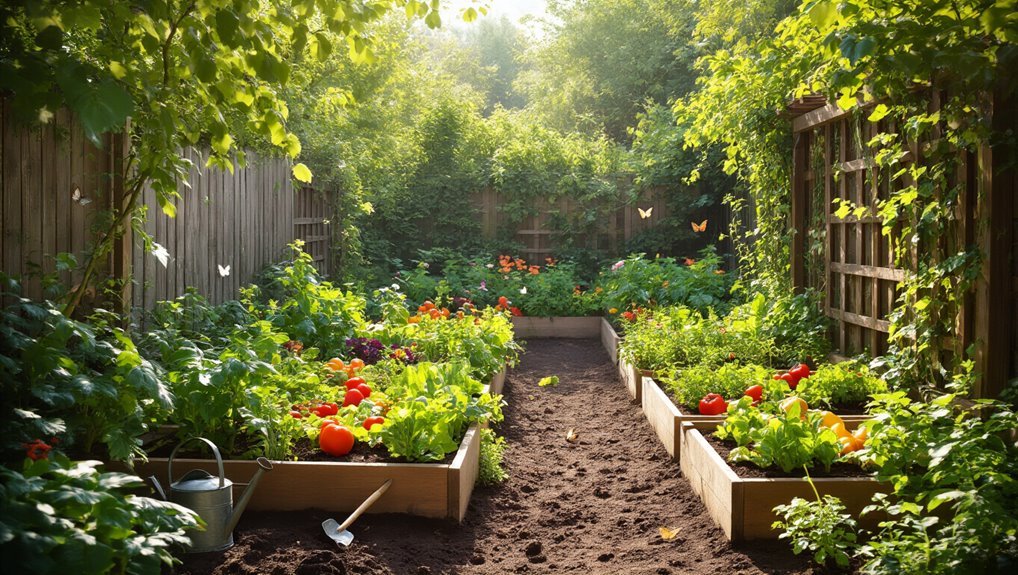
As the seasons change, so do the needs of your garden, which means staying attuned to these shifts is essential for your success. In spring, focus on planting seeds and preparing soil. Summer requires regular watering and pest control. Autumn is perfect for harvesting and planting cover crops, while winter is the time for maintenance and planning.
To help you navigate these seasonal tasks, check out the table below:
| Season | Key Tasks | Tips |
|---|---|---|
| Spring | Plant seeds | Use nutrient-rich soil |
| Summer | Water and weed | Mulch to retain moisture |
| Autumn | Harvest and compost | Store crops properly |
| Winter | Plan for next season | Research new plants |
| Year-round | Maintain tools | Keep them clean and sharp |
Stay proactive to enjoy a thriving garden!
Frequently Asked Questions
How Can I Start a Garden With Limited Sunlight?
If you’re starting a garden with limited sunlight, choose shade-tolerant plants like ferns, hostas, or certain herbs. Consider using reflective surfaces to maximize light and ensure consistent watering for healthy growth.
What Are the Best Gardening Apps for Beginners?
For beginners, you’ll find apps like Gardenize, PlantSnap, and My Garden incredibly helpful. They offer plant identification, care tips, and garden planning tools, making your gardening journey easier and more enjoyable from the start.
How Do I Attract Beneficial Insects to My Garden?
You might not realize it, but attracting beneficial insects can transform your garden. To do this, plant diverse flowers, avoid pesticides, and provide water sources. Soon, you’ll see those helpful pollinators buzzing around!
Can I Garden Indoors, and if So, How?
Yes, you can garden indoors! Start by choosing suitable containers, using quality potting soil, and placing them near bright windows. Consider grow lights for low-light areas, and remember to water and fertilize regularly for healthy plants.
What Are the Costs Associated With Starting a Home Garden?
Starting a home garden involves costs like seeds, soil, pots, and tools. Depending on your choices, you might also need fertilizers or grow lights. Budget wisely to enjoy a fruitful gardening experience without overspending.
Conclusion
Starting a home garden in 2025 can be a fulfilling and fun endeavor. By considering climate, cultivating carefully, and choosing the right tools, you’ll create a flourishing space. Remember, patience is key; plants take time to thrive. With a little love and labor, you’ll reap rewards that are truly gratifying. So, dig in and dive deep into this delightful journey of gardening—your green oasis awaits, ready to bloom beautifully!
